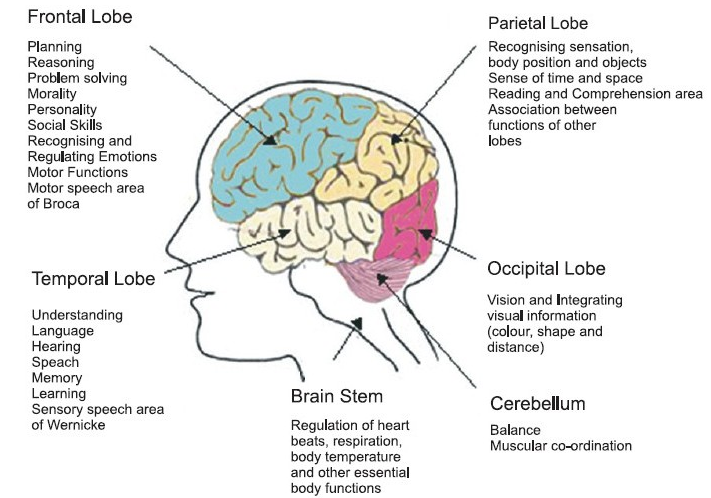Control of vital functions
The brain is the most complicated portion of the human body. This three-pound organ is the interpreter of the senses, seat of intelligence, initiator of body movement, and controller of behavior. In its bony shell and washed by protective fluid, the brain is the resource of all the qualities which define our humanity.The brain is like a group of experts. All parts of the brain work altogether, though each part has its own particular properties. The brain can be subdivided into three fundamental units: the forebrain, midbrain, & hindbrain.
The hindbrain involves the upper portion of the spinal cord, brain stem, and wrinkled ball of tissue known as the cerebellum. The hindbrains control the body's critical functions like respiration and heart rate. The cerebellum organizes movement and is included in learned rote movements. Whenever you play the piano, hit a tennis ball, or throw the dice in a casino game you are activating the cerebellum. The uppermost portion of the brainstem is the midbrain that controls few reflex actions and is portion of the circuit included in the control of eye movements and other voluntary movements. The forebrain is the main and most highly developed portion of the human brain: it consists mainly of the cerebrum.

Each cerebral hemisphere can be subdivided into parts or lobes, each of which focuses in various functions. To understand each lobe and its area of expertise we will take a tour of the cerebral hemispheres, beginning with the two frontal lobes that lie directly behind the forehead. Whenever you plan a schedule, visualize the future, or use reasoned arguments, these two lobes do a lot of the work. One of the maner the frontal lobes seem to do these things is by acting as short-term storage sites, permitting one idea to be kept in mind whereas other ideas are considered. In the rearmost part of each frontal lobe is a motor area that helps control voluntary movement. A close by position on the left frontal lobe known as Broca's area permits thoughts to be transformed into words.
Whenever you enjoy a good meal — the aroma, taste, and texture of the food — two parts behind the frontal lobes known as the parietal lobes are at work. The forward sections of these lobes, merely behind the motor regions, are the primary sensory regions. Such regions receive information about touch, temperature, taste, and movement from the rest of the body.